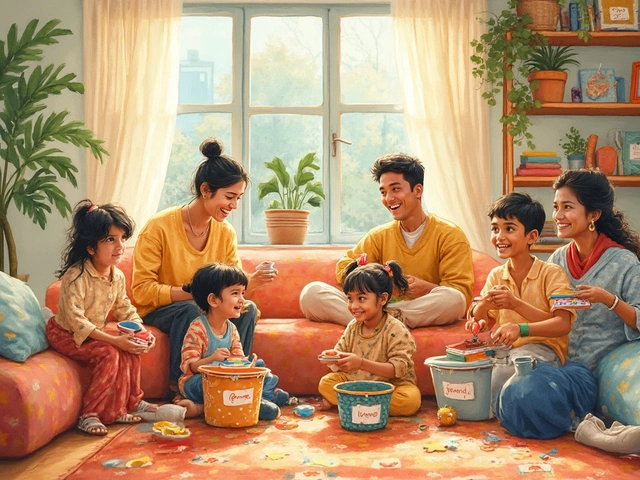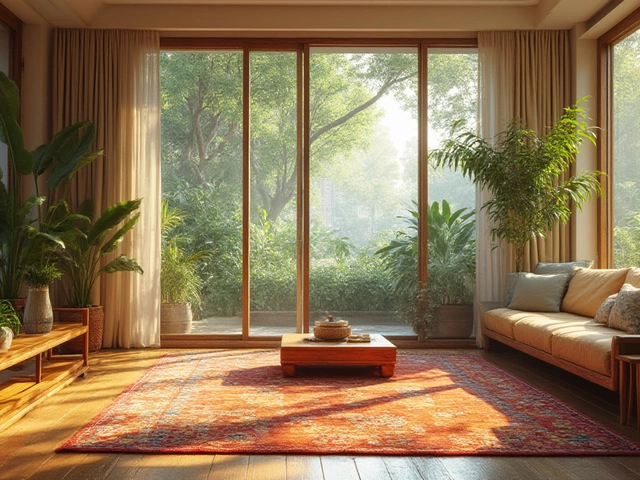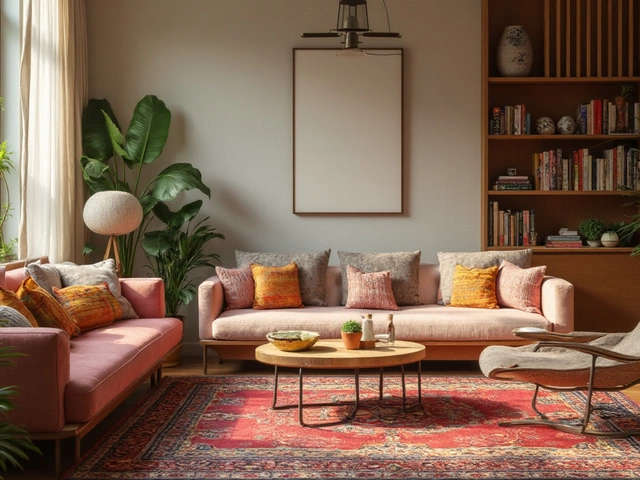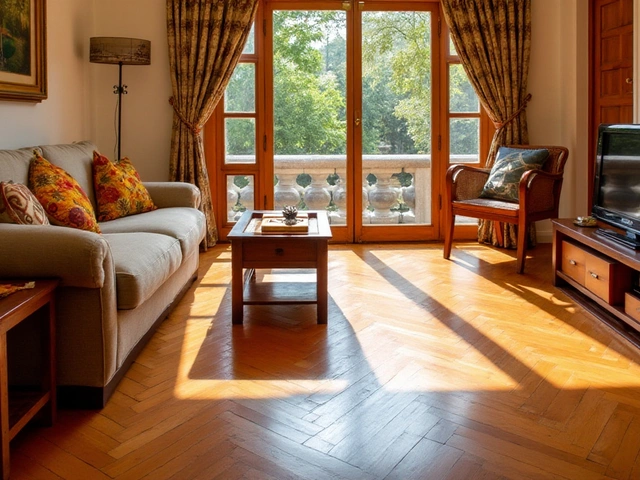Ever walked into someone’s house and wondered why it just feels so put-together, even if it’s not packed with expensive furniture? That’s usually not luck—it’s interior design done right. There are seven basic elements that nearly every professional designer relies on. You don’t have to hire an expert to pull off a sleek, modern look. Getting a handle on these fundamentals can make any space feel more intentional, whether you live in a city loft or a tidy suburban home.
Most of us think about things like sofas or wall colors first, but that’s just scratching the surface. There’s a whole toolbox designers use to create rooms that are both practical and easy on the eyes. Understanding these seven elements isn’t about memorizing fancy terms, but figuring out what actually works inside real homes—homes with pets, families, and busy lives. Ready to nail that crisp, modern vibe without the guesswork? Let’s get into what matters most, starting right from the ground up: your space.
- Space: Setting the Foundation
- Light: Making Every Room Shine
- Color & Texture: Adding Life and Personality
- Harmony: Pulling It All Together
Space: Setting the Foundation
It all starts with space—literally the floor, walls, ceiling, and everything in between. Designers look at a room’s dimensions, and what stands out is how much open or used area you have. This is called negative space (the empty parts) and positive space (where furniture and décor live). The best modern home interiors nail the balance: too much clutter makes a place feel cramped, too little can make it cold.
If you’ve got a small living room, it’s tempting to pack as much as you can in, but sometimes less is actually more. I once tried squeezing an oversized sectional into a tiny apartment, and it turned movie nights into an Olympic sport—just trying to get to the snacks. Turns out, sticking to furniture that fits the scale of the room gives you way more comfort and actually feels modern and intentional.
For bigger spaces, resist the urge to let everything float far apart. Grouping furniture into zones—for example, a sofa and chairs forming a clear TV area—keeps things cozy and usable. Don’t forget vertical space either: using shelves, tall bookcases, or even wall hooks can make use of areas you’d otherwise ignore. My dog Max has his own hooks by the door for leashes—simple, but keeps the entryway clear and the vibe clean.
- Measure before you buy anything. There’s nothing more annoying than a new table showing up and realizing it doesn’t fit.
- Leave enough clear space to actually move around. Aim for at least two to three feet between main pieces.
- Use rugs to define different functional spots in one big room, like separating eating and lounging zones.
Bottom line? The way you arrange your space makes every other element of interior design work better. Start with the flow and just a few well-chosen pieces—you can always add more, but taking things away gets tricky.
Light: Making Every Room Shine
If there’s one thing that can completely change how your home feels, it’s lighting. It’s not just about popping in some bright bulbs—smart lighting lets you show off what you love, hide what you don’t, and even make your space look bigger. With interior design, the right lighting is almost like a magic trick.
Modern homes use a mix of three basic types of lighting:
- Ambient lighting: The main source of light in a room—things like ceiling lights, pendant fixtures, or good old sunlight from windows.
- Task lighting: Lights that help you do stuff, like reading lamps, under-cabinet strips in the kitchen, or a wall sconce by your bed.
- Accent lighting: Smaller lights that add mood or highlight artwork, shelves, or cool architectural details.
Here's a quick look at common modern home lighting options and where they work best:
| Lighting Type | Common Placement | Pro Tip |
|---|---|---|
| LED Recessed Lights | Living rooms, kitchens, hallways | Low-profile and energy-saving |
| Pendant Lights | Over dining tables, kitchen islands | Pick adjustable height for flexibility |
| Floor Lamps | Reading nooks, next to couches | Look for ones with dimmers |
| Wall Sconces | Bedrooms, entryways | Great for freeing up nightstand space |
| Natural Light | All rooms with windows | Hang mirrors to bounce light around |
Lighting isn’t just about the fixture—it’s also how much you can control it. If your bulbs aren’t dimmable, you’re stuck with one level for everything from movie night to working from home. Smart bulbs or dimmer switches are a game changer. You can adjust mood instantly—brighter for chores, softer for downtime.
One surprising fact: a recent Houzz survey found that 84% of homeowners say improved lighting made them more satisfied with their renovations. It’s a small fix that punches way above its weight. And if energy bills have you worried, LEDs use about 75% less energy than old-fashioned bulbs and last up to 25 times longer.
Before you start shopping for lamps, just walk through your space at night and during the day. Notice dark corners, places you squint to read, or where your favorite art gets lost in the shadows. Make a quick plan using the types of lighting above. Small change, big impact—sometimes all it takes is swapping out a single bulb or adding a floor lamp to turn a "meh" room into a wow.
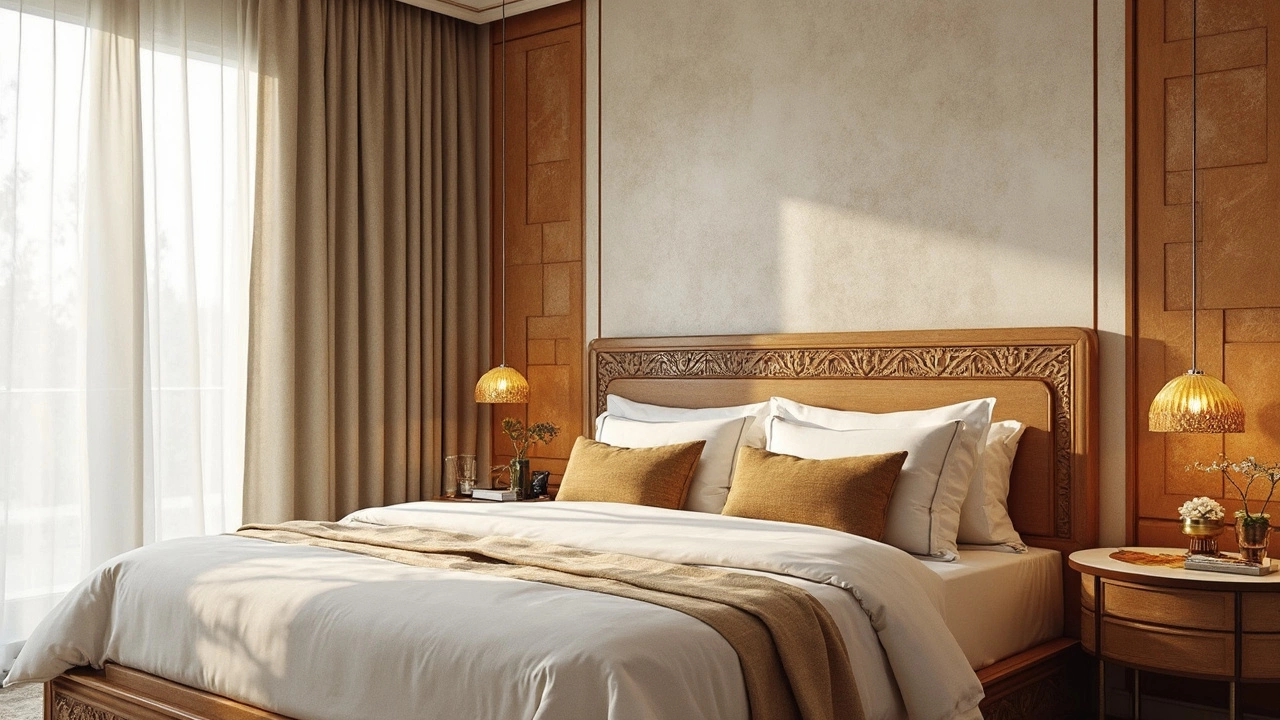
Color & Texture: Adding Life and Personality
Let’s be real—if you want your modern home to stand out, you can’t ignore color and texture. They’re not just for Instagram-worthy living rooms. Color grabs your attention right away. It sets the mood the second you walk into a room. Think of bright, bold shades for energy and cooler tones to create a chill vibe. Most designers agree that sticking to a palette of three main colors keeps things looking sharp, not messy. A recent survey by Houzz in 2024 showed that 62% of homeowners picked neutral colors for their main rooms, but 38% mixed in at least one accent wall or bold piece. That balance turns boring into interesting.
Texture is what stops a room from feeling flat. It’s all about mixing up different surfaces. You ever wonder why some spaces just look cozier, even if the furniture is simple? Usually, it’s the mix of smooth and rough—think a sleek metal table next to a chunky knit pillow, or a soft velvet sofa with a raw wood coffee table. Don’t forget about rugs, curtains, and even throws—each adds a layer your eyes and hands can notice.
| Color Category | Effect in a Room | Typical Use |
|---|---|---|
| Neutral (whites, greys, beiges) | Makes rooms feel bigger, relaxed | Main wall color, large furniture |
| Bold (blues, greens, yellows, reds) | Adds pop and focal points | Accent walls, artwork, pillows |
| Dark (navy, charcoal, black) | Feels dramatic, cozy | Bedrooms, dens, statement pieces |
If you want things to look intentional, here’s an easy checklist:
- Pick a base color (usually neutral) for about 60-70% of your big surfaces.
- Add a secondary color for 20-30% of small furniture or rugs.
- Finish with one or two accent shades for those last details.
- Mix at least three different textures in each room—like wood, metal, fabric.
If you have pets like my dog Max, consider fabrics and finishes that can take a beating, like leather, microfibre, or certain weaves designed to resist scratching. That way, your style survives real life and doesn’t turn into a maintenance nightmare. It’s all about balance: don’t overdo it, but don’t shy away either. Color and texture together are the shortcut to a home with real personality.
Harmony: Pulling It All Together
Harmony is where all your design choices click together and make a room feel intentional rather than thrown together. If you ever sit down in a living room and immediately feel comfortable, that’s probably because everything flows in a way that just makes sense. This isn’t about making everything match perfectly—far from it. It’s about balance, consistency, and making sure each element connects with the rest.
The golden rule: every piece, color, texture, and even the lighting should work toward a unified look. There’s a legit psychological edge to getting harmony right. Studies from the International Association of Color Consultants found that people rate harmonious rooms as 30% more relaxing than ones with clashing styles or chaotic layouts. No surprise there—our brains like order and unity, especially at home.
- Start with a clear main style (like Scandinavian, industrial, or mid-century modern) so choices don’t get random.
- Keep your color palette tight—two to three main colors, plus an accent shade, work best in most modern home designs.
- Use repeat elements, like the same wood tone in different rooms or matching metal finishes on light fixtures and table legs.
- Balance out large and small items—if you have a chunky couch, pair it with lighter coffee tables or chairs.
- Textures matter, too. Try pairing smooth surfaces (like stone countertops) with soft ones (like a plush area rug) to avoid things looking flat.
Here’s a quick look at how the pros create harmonious spaces, even when mixing styles or on a tight budget:
| Element | Do | Don't |
|---|---|---|
| Color | Stick with 2-3 main tones, repeat them in accessories | Use too many bold colors in one room |
| Furniture | Mix shapes but keep one common feature (like wood type) | Use all mismatched shapes and finishes |
| Decor | Use repeats—like black picture frames across rooms | Add random styles without connection |
| Lighting | Keep metal finishes consistent in each area | Mix gold, black, and chrome together without intention |
The best way to check for harmony: stand at the doorway and scan the room. If your eye moves easily from one spot to the next and nothing sticks out like a sore thumb, you’re on track. If something nags at your attention, it might need switching out or editing down. Max, my dog, tends to curl up in his dog bed where the living room has great harmony—probably because it feels as chill for him as it does for us.

